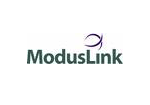Subscribe to our news:

 Partners
 Testimonials
Mark Worsnop: "By the way I wanted to say thank you for a good software package. It's a pleasure to work with Maestro as it "just works" and makes my job that much easier".
Mario Figueiredo: "I can safely forget all I know about SQL when using SQLite Maestro. It is that easy and intuitive to use. It is also nicely drawn with an easy and appealing interface that makes the sometimes boring tasks of database maintenance and administration more endurable.
The decision to support the non-commercial use of your software with a lower price is absolutely worth mentioning. For that alone, I thank you. For everything else, I say keep up the good work".
More
Add your opinion
 Customers
|
SQLite Maestro online Help
Browse Objects
SQLite Maestro allows to browse objects stored in a Remote Server database in several ways:
| • | Database Explorer: objects are represented as a hierarchy (grouped by kind and listed under the according SQLite database node, provided with subobjects if exist) |
| • | Object Browser: an extension of explorer with ability to sort, group, filter and multiple select objects. |
| • | Object Manager: an extension of the explorer with ability to select several objects at a time (to copy, drop, etc.) |
All tool allows you to drag-and-drop between them and to perform all necessary operations upon database objects.
|
 Company news 
May 5, 2021
New version introduces new database encryption algorithms, support for generated columns, support for renaming and dropping columns using ALTER TABLE statement, and some other enhancements.
Nov 14, 2016
New version introduces support for FTS5 extension and expression-based indexes, new encryption algorithms in data grids, updated data export and data import tools, and some other useful things.
Jan 12, 2015
New version comes with support of user authentication and management, read-only database connections, colored tabs, and some other new features.
 Feature of the day
SQLite Maestro: You can save frequently used queries to the database profile and use them as usual database objects.
SQLite Maestro allows you to view SQLite data as charts with a possibility to export it to an image file.
|
|




 Download
Download Buy
Buy
